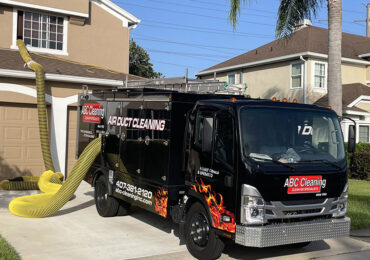Why Air Quality Regulations in Commercial Buildings Matter
Air quality regulations in commercial buildings play a critical role in protecting the health of occupants and ensuring compliance with legal standards. Poor indoor air quality (IAQ) can lead to significant health issues, including respiratory problems, allergies, and reduced productivity. These regulations establish guidelines to minimize pollutants and maintain a safe indoor environment.
The Environmental Protection Agency (EPA) estimates that indoor air is often two to five times more polluted than outdoor air. For businesses, this underscores the importance of adhering to air quality standards to safeguard employee well-being and avoid potential legal issues.
Key Regulations Governing Air Quality in Commercial Buildings
Various regulations and standards apply to the air quality of commercial buildings. Some are legally binding, while others serve as best practices for maintaining healthy environments. Here are the most important frameworks:
1. OSHA Standards
The Occupational Safety and Health Administration (OSHA) establishes workplace safety standards, including those related to air quality. OSHA’s General Duty Clause requires employers to provide a workplace free from recognized hazards, including poor air quality. Specific regulations include:
- Permissible Exposure Limits (PELs): OSHA sets limits on the concentration of harmful substances, such as carbon monoxide and asbestos, in the air.
- Ventilation Requirements: Adequate ventilation is necessary to control exposure to hazardous substances.
To learn more, visit OSHA’s Indoor Air Quality page.
2. ASHRAE Standards
The American Society of Heating, Refrigerating, and Air-Conditioning Engineers (ASHRAE) provides widely adopted guidelines for IAQ in commercial buildings. The ASHRAE Standard 62.1 is a leading reference for ventilation and indoor air quality. Key aspects include:
- Ventilation Rates: Guidelines specify the amount of outdoor air required for different building types.
- Pollutant Limits: Standards help reduce contaminants like mold, dust, and volatile organic compounds (VOCs).
ASHRAE’s standards are not legally binding but are often incorporated into local building codes. Explore ASHRAE’s IAQ resources.
3. EPA Guidelines
The EPA provides guidance on maintaining indoor air quality through its Indoor Air Quality Tools for Schools program and other resources. While the EPA does not enforce IAQ regulations for most commercial buildings, it offers best practices for managing pollutants such as radon, lead, and VOCs.
For more information, visit EPA’s Indoor Air Quality page.
Compliance Challenges for Commercial Buildings
Despite the availability of standards, achieving compliance can be challenging for many building managers. Factors such as aging HVAC systems, high occupancy levels, and the presence of chemical pollutants require ongoing monitoring and maintenance. Neglecting these issues can lead to penalties, lawsuits, or decreased property value.
Interesting Fact: Economic Impact of Poor IAQ
A study by the Harvard T.H. Chan School of Public Health found that improving indoor air quality in office buildings can enhance cognitive function by 61%. This highlights the economic and productivity benefits of adhering to air quality regulations.
How to Ensure Compliance
To meet air quality regulations in commercial buildings, consider the following steps:
1. Conduct Regular Inspections
Schedule routine inspections of HVAC systems, ventilation, and air filtration equipment. Ensure that filters are replaced and ducts are cleaned regularly to prevent the buildup of pollutants.
2. Monitor Air Quality
Invest in air quality monitoring devices to track pollutant levels. These tools can detect issues such as carbon dioxide buildup or high humidity levels before they escalate.
3. Engage Professionals
Work with certified IAQ professionals to assess and improve air quality. Services may include testing for mold, VOCs, and other contaminants, as well as developing mitigation strategies.
4. Stay Informed
Keep up with updates to local building codes and industry standards. Changes in regulations may require adjustments to your building’s air quality management practices.
Future Trends in Air Quality Regulations
Emerging technologies and growing awareness of IAQ are driving new trends in building management. Key developments include:
- Smart HVAC Systems: Advanced systems can optimize ventilation and monitor air quality in real time.
- Green Building Certifications: Programs like LEED emphasize IAQ as part of sustainable building practices.
- Pandemic-Driven Changes: The COVID-19 pandemic has increased focus on air filtration and ventilation to reduce the spread of airborne pathogens.
Conclusion
Adhering to air quality regulations in commercial buildings is essential for ensuring occupant health, legal compliance, and operational efficiency. By following standards from OSHA, ASHRAE, and the EPA, building managers can create safer environments while supporting productivity and well-being.
If you need assistance with air quality compliance, consult professionals or explore the resources mentioned above. Protecting indoor air quality is an investment in both your property and its occupants
ABC Cleaning, Inc. | Air Quality Regulations in Commercial Buildings
Get in Touch
If you’re concerned about the indoor air quality in your home, contact ABC Cleaning Inc. today. Our expert team is ready to provide comprehensive services to ensure your home’s air is clean and healthy.
Contact Information
Oviedo Office: 809 Eyrie Dr., Oviedo, FL 32765 | Tel: (407) 381-2120
Orlando Office: 1005 N. Pine Hills Rd., Orlando, FL 32808 | Tel: (407) 381-2120
Cocoa Office: 3665 King St., Cocoa, FL 32926 | Tel: (321) 340-6132
Sanford Office: 119 Commerce Way, Unit E, Sanford, FL 32771 | Tel: (407) 603-3668



